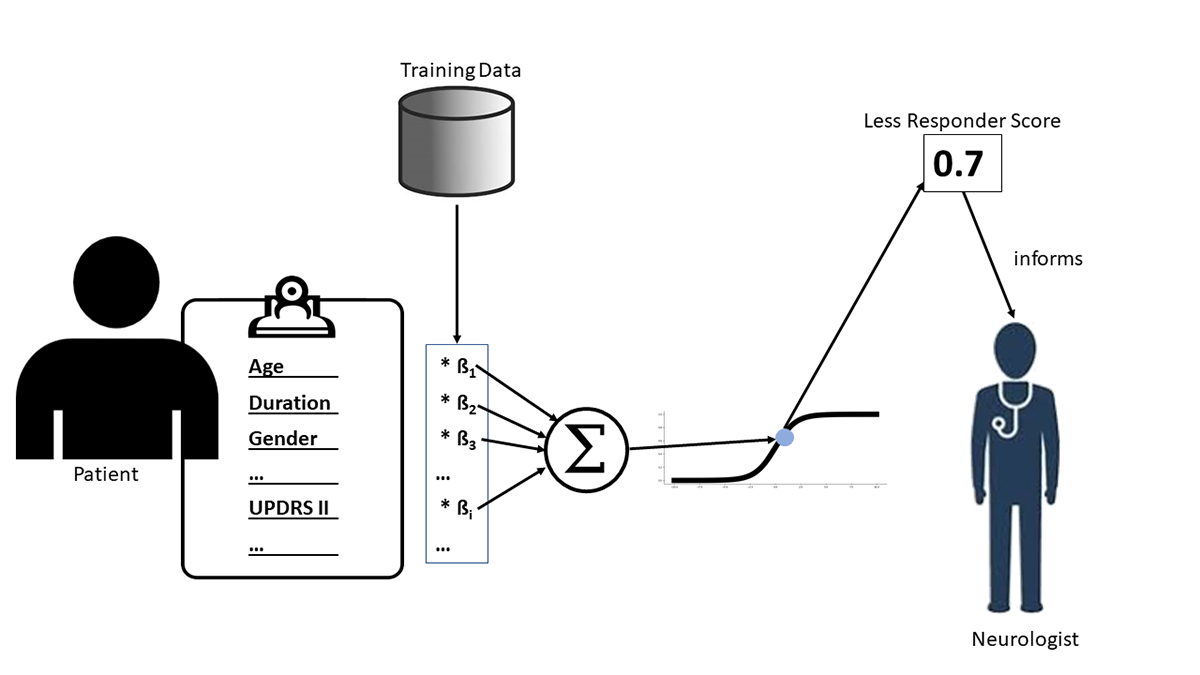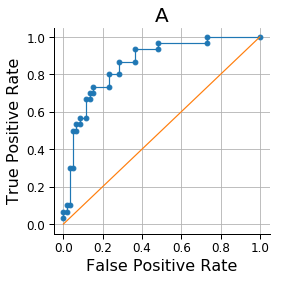Session Information
Date: Wednesday, September 25, 2019
Session Title: Surgical Therapy
Session Time: 1:15pm-2:45pm
Location: Les Muses Terrace, Level 3
Objective: To predict the probability of individual PD patients to respond to STN DBS at one year follow up based on preoperative clinical data with a machine learning approach. We hypothesize that the model can produce reliable probabilities.
Background: STN DBS is a well-established advanced therapy for patients with PD. Patients are selected for this therapy based on a pre-operative screening.(1, 2) Unfortunately, a small but relevant group of patients undergoing subthalamic DBS does not show the desired clinical response of improvement in motor symptoms or decrease in motor complications.(3) Reliable predictors to identify these patients are currently not available.
Method: Data from a retrospective cohort of 127 PD patients who underwent STN DBS surgery in the Maastricht University Medical Center between January 2000 and March 2017 were used. We selected 90 subjects who completed the one-year follow up. The other subjects were excluded because of missing data in the UPDRS III assessment during pre-operative ON-medication and/or post-operative ON-medication/ON-stimulation. Other missing preoperative values were imputed using linear regression models. Patients were classified as responders if one year post-operatively the UPDRS III improvement was ≥5 points, or the UPDRS II ≥3 points or the UPDRS IV, ≥3 points. Non-responders did not meet these criteria. A machine learning method using logistic regressions was used to predict the probability to be a non-responder. We used a 10-fold cross-validation to evaluate our model.
Results: Our model predicts the classification outcome with an area under the curve of 0.85. The preoperative factors with the highest impact on being responders are a high preoperative UPDRS IV score and a high UPDRS III rigidity subscore. Older age at disease onset showed to increase the probability to be a non-responder. Neuropsychological scores showed contradictory Odds Ratios.
Conclusion: Our machine learning based model produces accurate probabilities to predict response to STN DBS therapy. The next step is validation in a new STN DBS population and ultimately in a prospective design. This method could be used as a tool during preoperative counseling in the future.
References: 1. Deuschl G, Schade-Brittinger C, Krack P, Volkmann J, Schafer H, Botzel K, et al. A randomized trial of deep-brain stimulation for Parkinson’s disease. The New England journal of medicine. 2006;355(9):896-908. 2. Schuepbach WM, Rau J, Knudsen K, Volkmann J, Krack P, Timmermann L, et al. Neurostimulation for Parkinson’s disease with early motor complications. The New England journal of medicine. 2013;368(7):610-22. 3. Williams A, Gill S, Varma T, Jenkinson C, Quinn N, Mitchell R, et al. Deep brain stimulation plus best medical therapy versus best medical therapy alone for advanced Parkinson’s disease (PD SURG trial): a randomised, open-label trial. The Lancet Neurology. 2010;9(6):581-91.
To cite this abstract in AMA style:
J. Habets, M. Janssen, A. Duits, B. de Greef, A. Mulders, L. Sijben, Y. Temel, M. Kuijf, P. Kubben, C. Herff. A machine learning approach to predict non-responders to subthalamic nucleus deep brain stimulation in Parkinson disease patients based on preoperative characteristics [abstract]. Mov Disord. 2019; 34 (suppl 2). https://www.mdsabstracts.org/abstract/a-machine-learning-approach-to-predict-non-responders-to-subthalamic-nucleus-deep-brain-stimulation-in-parkinson-disease-patients-based-on-preoperative-characteristics/. Accessed January 7, 2026.« Back to 2019 International Congress
MDS Abstracts - https://www.mdsabstracts.org/abstract/a-machine-learning-approach-to-predict-non-responders-to-subthalamic-nucleus-deep-brain-stimulation-in-parkinson-disease-patients-based-on-preoperative-characteristics/


